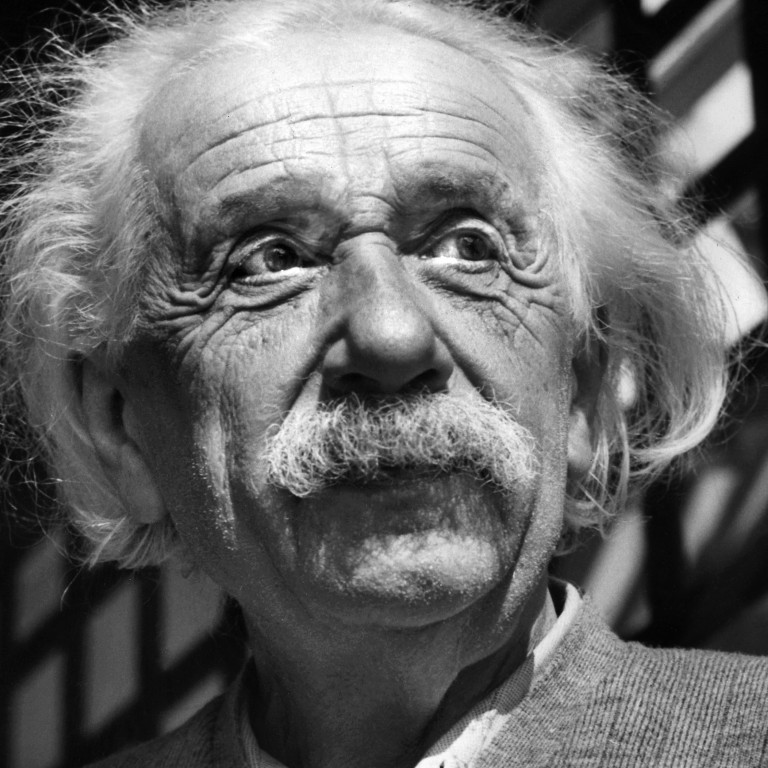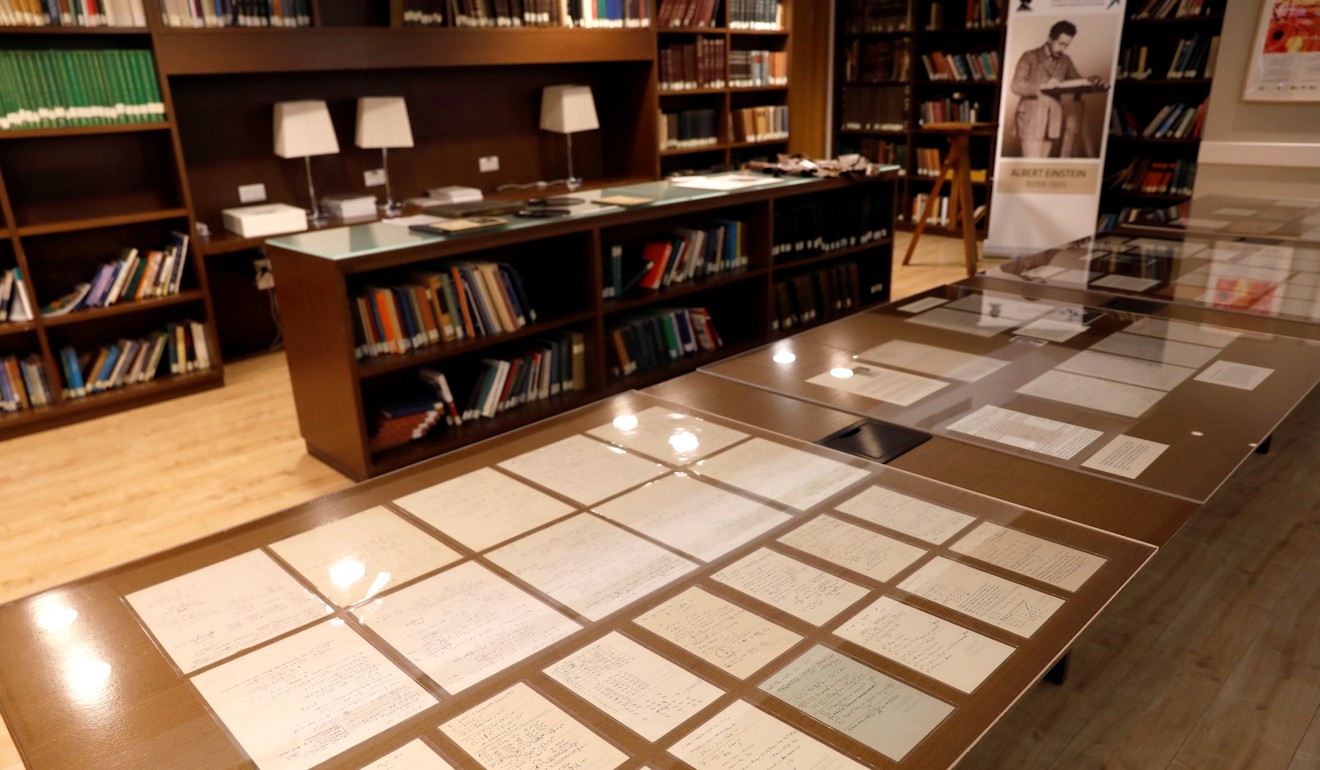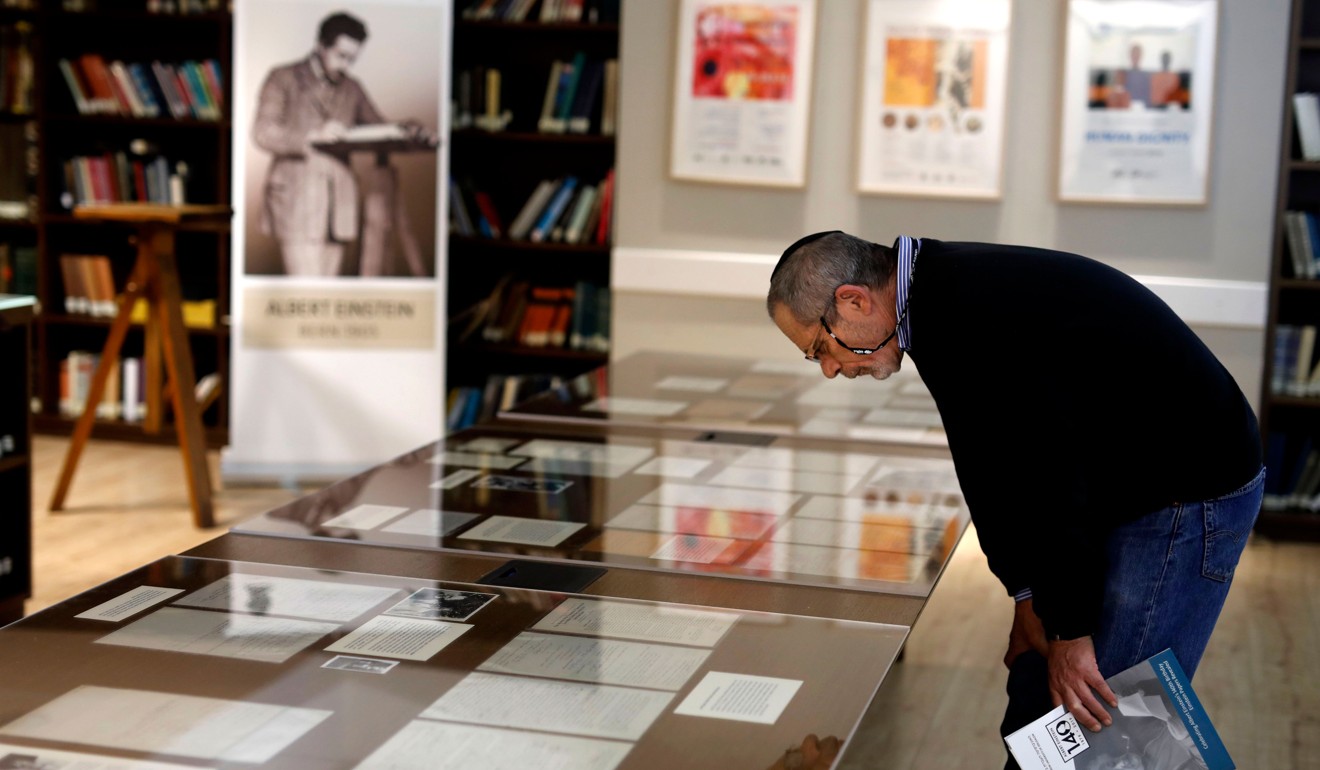
Albert Einstein ‘puzzle’ solved as missing page emerges in new trove
- A missing manuscript page is discovered in the 110-page trove Hebrew University’s Albert Einstein archives received recently
An Albert Einstein “puzzle” has been solved thanks to a missing manuscript page emerging in a trove of his writings newly acquired by Jerusalem’s Hebrew University, officials announced on Wednesday.
The handwritten page, part of an appendix to a 1930 paper on the Nobel winner’s efforts towards a unified field theory, was discovered among the 110-page trove the university’s Albert Einstein archives received some two weeks ago.
Hebrew University unveiled the collection to coincide what would have been Einstein’s 140th birthday on March 14.
Most of the documents constitute handwritten mathematical calculations behind Einstein’s scientific writings in the late 1940s.

There are also letters that Einstein, born in Germany in 1879, wrote to collaborators that deal with a range of scientific and personal issues, including one to his son, Hans Albert.
The 1935 letter to his son expresses concern about the rise of the Nazi party in Germany.
Nearly all the documents had been known to researchers and available in the form of copies – “sometimes better copies, sometimes very poor copies”, said Hanoch Gutfreund, scientific adviser to the university’s Einstein archives.
Gutfreund, a physics professor and former president of the university, said the eight-page appendix of the 1930 unified theory paper had never been published, though researchers had copies of it.
“But in the copies we had, one page was missing, and that was a problem. That was a puzzle,” Gutfreund said.
“And to our surprise, to our delight, that page is now here. It came with the new material,” he said.
Hebrew University said: “This article was one of many in Einstein’s attempts to unify the forces of nature into one, single theory and he devoted the last 30 years of his life to this effort.”
The collection, acquired through a donation from the Crown-Goodman foundation in Chicago, was bought from Gary Berger, a North Carolina doctor who had a private collection of Einstein writings.

Gutfreund refused to divulge the sum paid for the 110 papers.
Einstein was one of the founding fathers of the Hebrew University and served as a non-resident governor of the Jerusalem institution.
When the physicist died in 1955, he bequeathed the university his archives, with curator Roni Grosz saying its 82,000 items make it the world’s most extensive collection of Einstein documents.
The acquisition was a birthday gift not only to the collectors and public, “but to Einstein himself, because all of the material here reaches the place he wanted it to,” Gutfreund said.
Grosz and his team have digitised the new collection and researchers were already working on its scientific angles.
While good quality digital copies are accessible to the public and researchers, “originals are a very special addition to a collection”, Grosz said, which have a “special magic” to them and provide an opportunity to be put on display.
Einstein, a theoretical physicist whose opinions on current-day affairs were at times controversial during his lifetime, has evolved into a consensual figure in popular culture, Grosz said, predicting his popularity would continue to grow.
“Einstein is the go-to guy that everybody wants to identify with, and that’s not going to change,” he said.
“Einstein was also a colourful person, besides being a top-notch scientist. That’s rare in scientific persona.”

“Einstein already has become a myth detached from his real person, and this myth will perpetuate itself for years to come and I don’t see an end to it,” said Grosz.
Einstein’s more human side can be seen in the personal letters.
In the letter to his son, he writes that “in Germany things are slowly starting to change”.
“Let’s just hope we won’t have a Europe war first … the rest of Europe is now starting to finally take the thing seriously, especially the British,” he wrote.
“If they would have come down hard a year and a half ago, it would have been better and easier.”

.png?itok=arIb17P0)